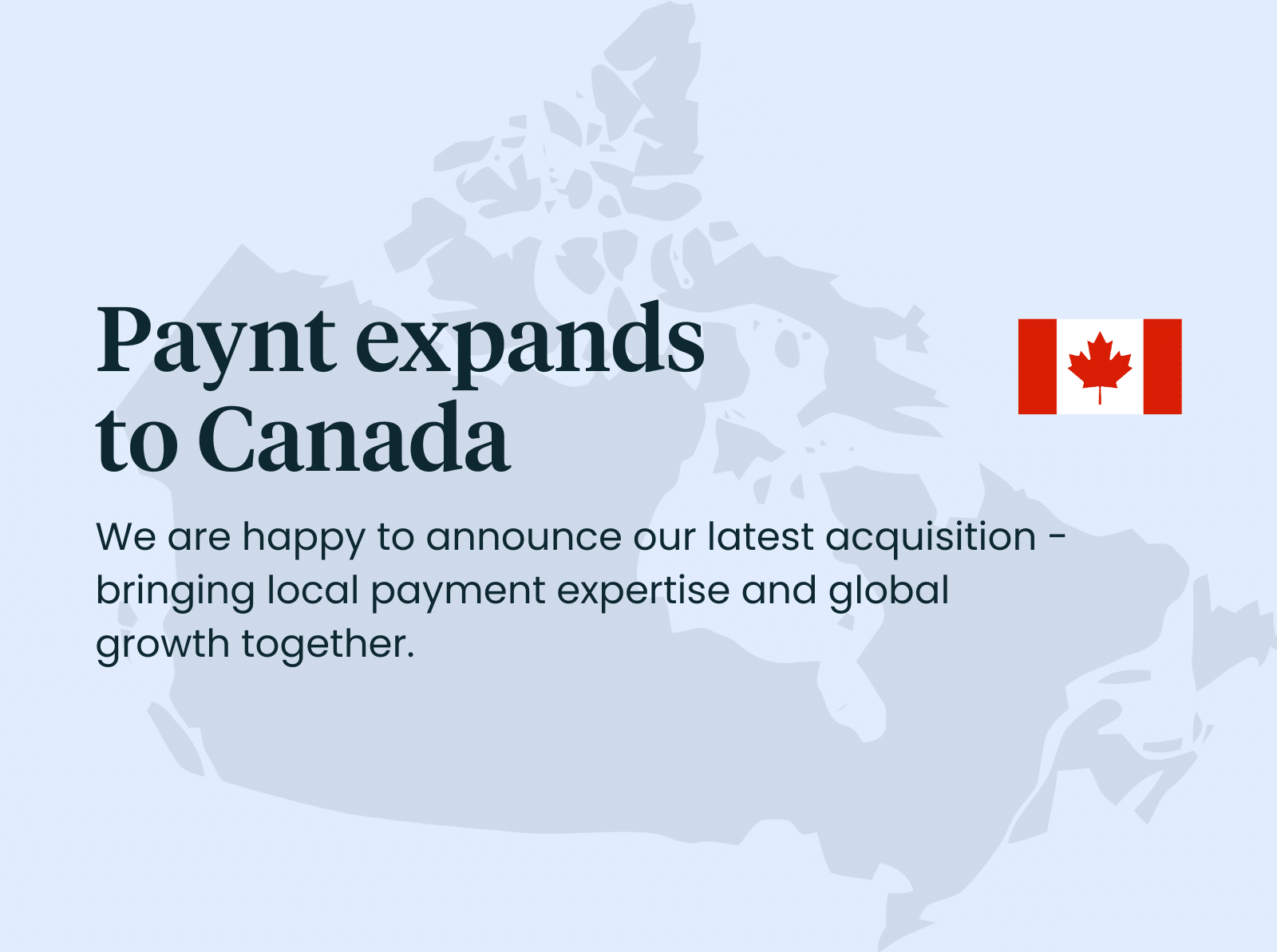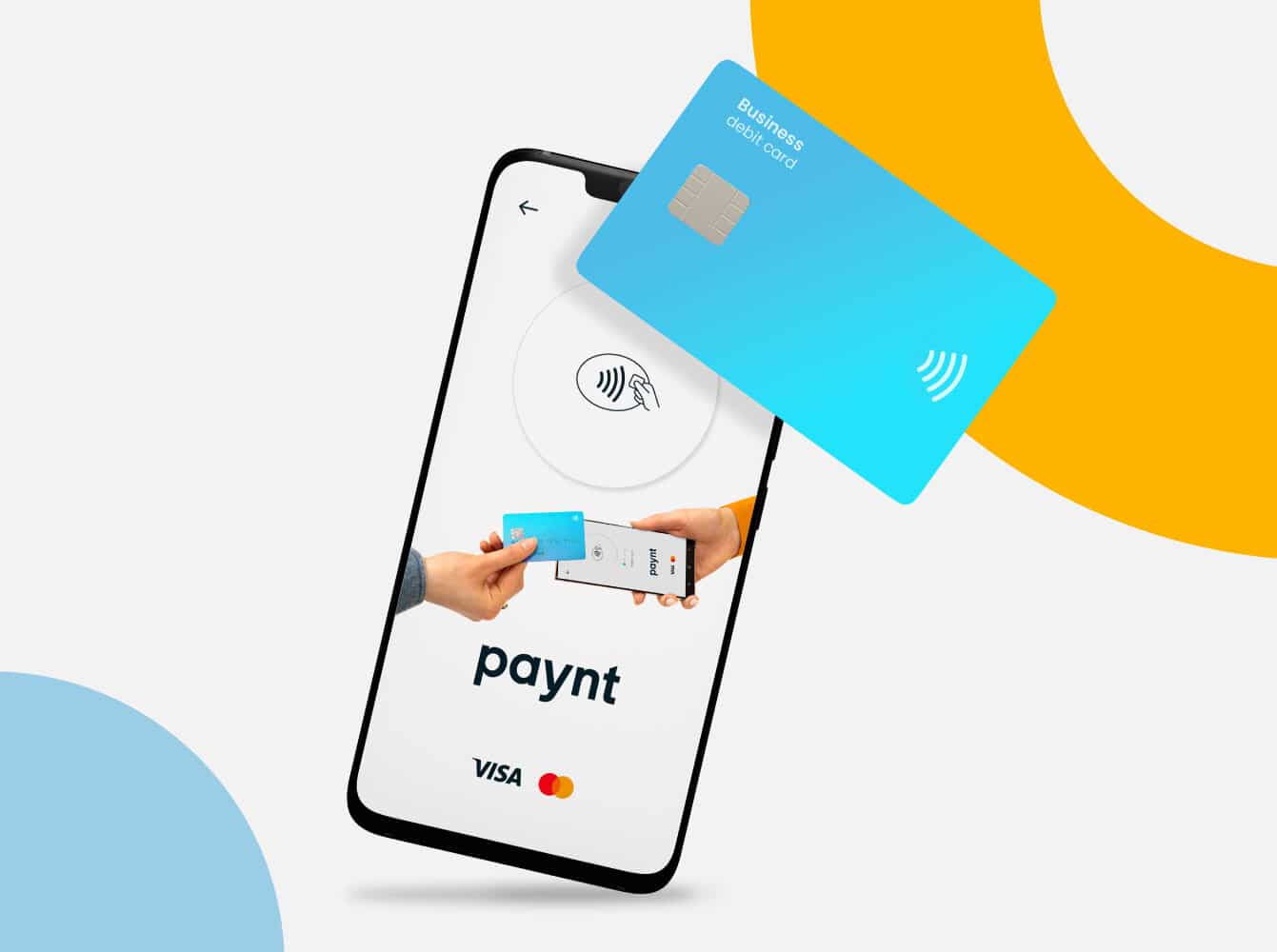Blog
News
2 min
Paynt Acquires Canada Based E-xact Transactions to Accelerate North American Expansion
Read more


Industries
7 min
Staying Ahead of the Curve: How Lithuania is Evolving FinTech Regulatory Environment
With the rapid growth of the FinTech industry, regulatory oversight has become increasingly important. Lithuania has not only positioned itself as the leading hub for financial innovation, with a thriving ecosystem of companies and start-ups, but has also implemented significant changes in the regulatory environment. Paynt has been operating under Lithuanian jurisdiction for over six years and was among the first to obtain an EMI license (No.2) from the Bank of Lithuania. We have witnessed this evolution and have remained at the forefront of compliance throughout. We asked our Chief Compliance Officer and MLRO, Egle Andzeviciute, to share valuable insights on the changes and what they mean for our industry. The Rise of Lithuania's FinTech Ecosystem In recent years Lithuania has become the new FinTech hub of the European Union. According to TheBanks.EU (*1), in the EU there are 272 registered Electronic Money Institutions (EMIs) out of which nearly one-third are registered in Lithuania. In recent years growth of Payment Institution (PI) issued licenses have been observed too. According to the Overview of activities of EMIs and PIs (2022 Q3) issued by the Bank of Lithuania (*2), in total there are 138 FinTech licenses granted (87 EMIs and 51 PIs) by the Lithuanian regulator. The most rapid expansion of the Lithuanian FinTech sector was seen during 2016-2020, which then stabilized over the last two years (see Figure 1). According to the Fintech Landscape Report 2021-2022 (*3) issued by Invest Lithuania, FinTech businesses choose Lithuania mainly because its regulatory environment and infrastructure is FinTech-friendly (81% of respondents indicated this reason). Also, Invest Lithuania Fintech Survey Results (2021) show that 88% of respondents had a positive experience with the local regulator - the Bank of Lithuania. Riding the Wave of Change The Lithuanian FinTech era growth during 2016-2020 marks other important EU policy timelines: on the 23rd of June, 2016 the United Kingdom citizens voted to leave the European Union and on the 31st of January, 2020 at midnight (CET) Brexit entered into force (The UK is no longer an EU member state and is considered a third country by the European Union) (*6). Following the UK withdrawal agreement, European Banking Authority clarified the Brexit transition period matters (2020) (*7) which explains that a segment of the EU-resident client base of the UK-based financial institutions had to be transferred to the institutions that are licensed within a member state. Otherwise, UK-based institutions without EU-granted authorization will lose the right to provide financial services within the EU. Taking into account the supranational political circumstances, it is clear that Lithuania successfully employed the opportunity of Brexit and started to build up its own financial centre within the EU. Improving the Regulatory Landscape Lithuania as a pioneering country and home to hundreds of FinTech companies had to react and mature fast, especially with adopting laws and regulations to the changing environment and new risks. It was evident that over time, the number of applicable regulations, resolutions, decisions, rules, guidelines and recommendations issued by the Bank of Lithuania rose significantly. In the beginning, the regulator’s attention was focused mainly on money laundering and prevention of terrorist financing, safeguarding of client funds and capital adequacy compliance. However, in recent years, it rapidly expanded to other equally important topics such as governance, internal controls, risk management and ICT, and security risk management. The change in focus is also evident in the Inspection Plans of Financial Market Participants (*8) that the Bank of Lithuania is issuing each year. The new focus areas appear in the inspection plans for EMIs only starting in 2021. Over the years, the number of inspections, ad-hoc requests and visits carried out by the Bank of Lithuania grew significantly year on year. So did the imposed fines up until 2020 (see Figure 2). Worth noting that even though the Bank of Lithuania performed two times more analyses, inspections and visits in 2021 compared to 2020, the amount of imposed regulatory fines slightly decreased. These figures could be a proof of market maturity: despite an increasing number of inspections, fewer firms are being fined by the regulator or the imposed fines are smaller in monetary value which could also mean that violations are not that harsh. Paynt observed that during the last years, the Bank of Lithuania mainly punished firms for compliance with deficiencies rather than non-compliance (*10). As it is visible in the Bank of Lithuania website’s section Enforcement Measures, those firms that were not compliant with the applicable regulations, on many occasions had their licenses revoked or suspended. It is worth noting that within strengthening FinTech compliance maturity, the barriers to entering the Lithuanian-regulated financial market increase as well. Each year regulation becomes more detailed and regulatory expectations will only rise in the upcoming years. There are also such regulatory bodies as Financial Crimes Investigation Service, State Data Protection Inspectorate, State Tax Inspectorate and others that have their own issued requirements, rules, and decisions that are applicable to FinTech market participants and play a significant role in protecting the financial environment in the Republic of Lithuania. In the current era of globalization and digitalization, regulated sectors by their nature are becoming more complex each year - within innovative products, the risk of their abuse by offenders is only increasing. Criminals keep searching for new, more sophisticated methods to launder illicit funds, finance terrorism, evade sanctions and otherwise abuse the financial system. Therefore, it is important that market participants have sufficient knowledge and understanding of the existing typologies and emerging risks in order to control them effectively and not become a victim of bad actors. To conclude, it is evident that Lithuanian regulators consistently seek to improve compliance and drive the FinTech market towards maturity by strengthening and expanding the scope of the applicable regulations. Even though some may see it as a market entrance barrier, it is worth noting that detailed regulation and clear regulatory expectations may be valuable guidance on how to build a sound compliance and risk management program within a business and actually be ready to operate in this complex environment. Egle Andzeviciute, our Chief Compliance Officer and MLRO, has 8+ years of financial sector experience, an MSc in Financial Economics, and is ACAMS certified Anti-Money Laundering (CAMS) and Global Sanctions Specialist (CGSS). Since joining Paynt she has successfully led the AML/CFT & Compliance team ensuring best practice in an evolving regulatory environment. Her motto, “The risk is too high until one researches, calculates, and understands the unknown”, guides her through the daily challenges. * Sources:1) Electronic Money Institutions.TheBanks.EU. URL: https://thebanks.eu/emis2) Overview of activities of electronic money institutions (EMI) and payment institutions (PI) in Q3 2022. Bank of Lithuania. https://www.lb.lt/uploads/publications/docs/39355_353e60f17d69b60f1c19383f1ebf9fc2.pdf3) The Fintech Landscape in Lithuania 2021-2022. Invest Lithuania. URL: https://investlithuania.com/report/fintech-report-2021-2022/4) Annual report (2021), Bank of Lithuania. URL: https://www.lb.lt/lt/leidiniai/metu-ataskaita-2021-m?html=1#_Toc1003235115) Overview of activities of electronic money institutions (EMI) and payment institutions (PI) in 2022 III quarter. Bank of Lithuania. https://www.lb.lt/uploads/publications/docs/39355_353e60f17d69b60f1c19383f1ebf9fc2.pdf6) Timeline - The EU-UK withdrawal agreement (2022). Council of the European Union. https://www.consilium.europa.eu/en/policies/eu-relations-with-the-united-kingdom/the-eu-uk-withdrawal-agreement/timeline-eu-uk-withdrawal-agreement/7) EBA informs customers of UK financial institutions about the end of the Brexit transition period (2020). European Banking Authority. URL https://www.eba.europa.eu/eba-informs-customers-uk-financial-institutions-about-end-brexit-transition-period8) Inspection plan of financial market participants (2023). Bank of Lithuania. URL: https://www.lb.lt/lt/finansu-rinku-dalyviu-tikrinimo-planas9) Annual report (2021), Bank of Lithuania. URL: https://www.lb.lt/lt/leidiniai/metu-ataskaita-2021-m?html=1#_Toc10032351110) Enforcement measures, Bank of Lithuania. URL: https://www.lb.lt/en/enforcement-measures-1

Products
4 min
SoftPOS: The evolution of payment acceptance
Offering the right product or service at the right time and place is essential for business growth, but that’s not the only step toward success. The customer experience throughout the buying journey is just as important. Friction in the payment process can lead to frustration and erode trust, ultimately driving customers away. But there is an exciting upgrade in the market! The next wave of payment acceptance capabilities It's no surprise that SoftPOS, the latest innovation that is revolutionizing the POS industry, was last year's buzzword. With 2023 set to be its prime time, SoftPOS is quickly becoming the go-to choice for merchants of all sizes and industries. This software-based solution democratizes payment acceptance by allowing anyone to use a mobile device to accept contactless payments from EMV cards, digital wallets, and smartwatches. Whether it's a trusty smartphone or a sleek tablet, SoftPOS will turn it into a payment terminal. Exciting, right? Not only does SoftPOS eliminate the need for costly and bulky POS terminals, but it also reduces ongoing maintenance costs. Its simplicity and flexibility allow for easy payment processing anywhere, anytime. This makes SoftPOS the ideal solution for businesses looking to boost sales, cut expenses, and enhance customer experience. While it's currently only available on Android devices, iOS users will be able to get their hands on it later this year, further expanding reach and accessibility of SoftPOS. One-for-All solution SoftPOS is built to meet the needs of everyone – small, medium-sized, and large enterprises – whether your merchants need mobility and functionality for their daily business operations or an extra payment device for a weekend pop-up market. Let's look at some of the industries and situations that can benefit from SoftPOS! Retailers At traditional checkout counters to speed up transactions and reduce lines During in-store events, such as pop-up shops and trade shows During curbside pickups or delivery orders During high-traffic sales, such as Black Friday or other seasonal events to handle the increased volume of customers As a backup solution in case of existing terminal failures, ensuring that the business can continue to process payments without interruption Service providers Home repair and maintenance professionals, such as electricians and plumbers can accept payments on the spot Cleaning professionals, who offer general housekeeping and other cleaning services Lawn care and landscape professionals Healthcare and personal care professionals, such as physical therapists, nurses, fitness trainers, massage therapists, and even hairdressers In-home teachers, and other service providers Hospitality & Food Hotels, resorts, and vacation rentals Tour and activity providers Museums and cultural attractions (for tickets, tours, etc) Bars and pubs Restaurants, cafes, and event catering companies Entertainment Home-based party and event entertainers Event venues, concerts, and festivals Theaters and cinemas Game venues and arcades Donations At fundraising events (walkathons, galas or auctions) At community events (festivals, parades or fairs) In religious institutions (churches, synagogues or mosques) At educational institutions (schools and universities) And through different organizations, such as NGOs, health-related charities, cultural organizations, political organizations, or social service organizations Mobility Services Taxi, ride-sharing services, and rentals (car, scooters, e-bikes) Traffic police may accept penalty fees on the spot Ferries and water taxis Airlines, airports, flight attendants Public transportation The list goes endless and that's the magic of SoftPOS – anyone can use it! Closing note In collaboration with industry-certified technology providers, we offer three different SoftPOS solutions to meet your merchant's needs. A simple Paynt Now app ready to download on Google Store. More complex and customizable option White Label. And Software Development Kit that allows integrating payment acceptance capabilities with your merchants existing systems and developing a custom app. Gain a competitive advantage, attract more customers, and increase your revenue by expanding your product portfolio with a new and easy-to-access payment solution that can be enabled for merchants within minutes.Our team provides a full end-to-end process and support to help bring your merchants on board. Reach out to our SoftPOS Product Manager at [email protected] to learn more about our offering.

Products
2 min
From Days to Minutes: The Power of Auto-Onboarding
In the fast-paced world of payments, it’s important to onboard your merchants efficiently and effectively. Not only does it help you set up more customers, but it also ensures that they feel supported as they start using your services. Traditionally, onboarding has been a time-consuming and often tedious process. It typically involves a lot of manual tasks, long waits for approval, and other hurdles before even being able to access payment processing capabilities. Thanks to smart integrations with third-party services we have changed the game. Within just a few clicks, your customer accounts will be set up and running in less than 10 minutes. No more waiting or navigating a pile of documents – our system makes it easy to get started right away. Here are some of the major benefits of automating your onboarding process: #1 Improved Customer Experience Most information in the application form is pre-filled, meaning you can provide your merchants with quick and automated sign-ups that will improve their overall experience with you, and help them save time. #2 Greater Scalability Our automated onboarding process allows you to grow your business more quickly and effectively. It helps to reduce your overall costs and resources associated with manual processes, especially if you work with large numbers of new customers or high turnover rates. #3 Increased revenue Onboarding more merchants in a shorter period of time means earning your commissions faster and thus increasing revenue. It can help you stand out in a crowded market by differentiating your offering from your competitors. #4 Reduced Risk Auto-onboarding helps reduce the risk of errors, mistakes, or fraud, as it includes checks to verify merchant identity and business information to ensure that all required information and documents are collected and processed accurately without human error. #5 API Integrations Our automated onboarding is flexible and can either be used via our APIs or Paynt Portal. Our API solution is the perfect way for you to incorporate merchant application and technical boarding with your own applications, technology platforms, website, social media pages, and more – enabling you to control the look and feel to ensure consistency with your brand!
No posts here yet!
Explore other sections or check back soon for new content.
Let’s talk
Contact Us